During the season, there are time when players should perform extra “conditioning” work. When making daily decisions on how to design this type of work, it’s helpful to ask these 3 questions: · What does the player need?· What has the player done recently?· How long does the player have to recover? This will help identify the most impactful training goal, […]
Blogs
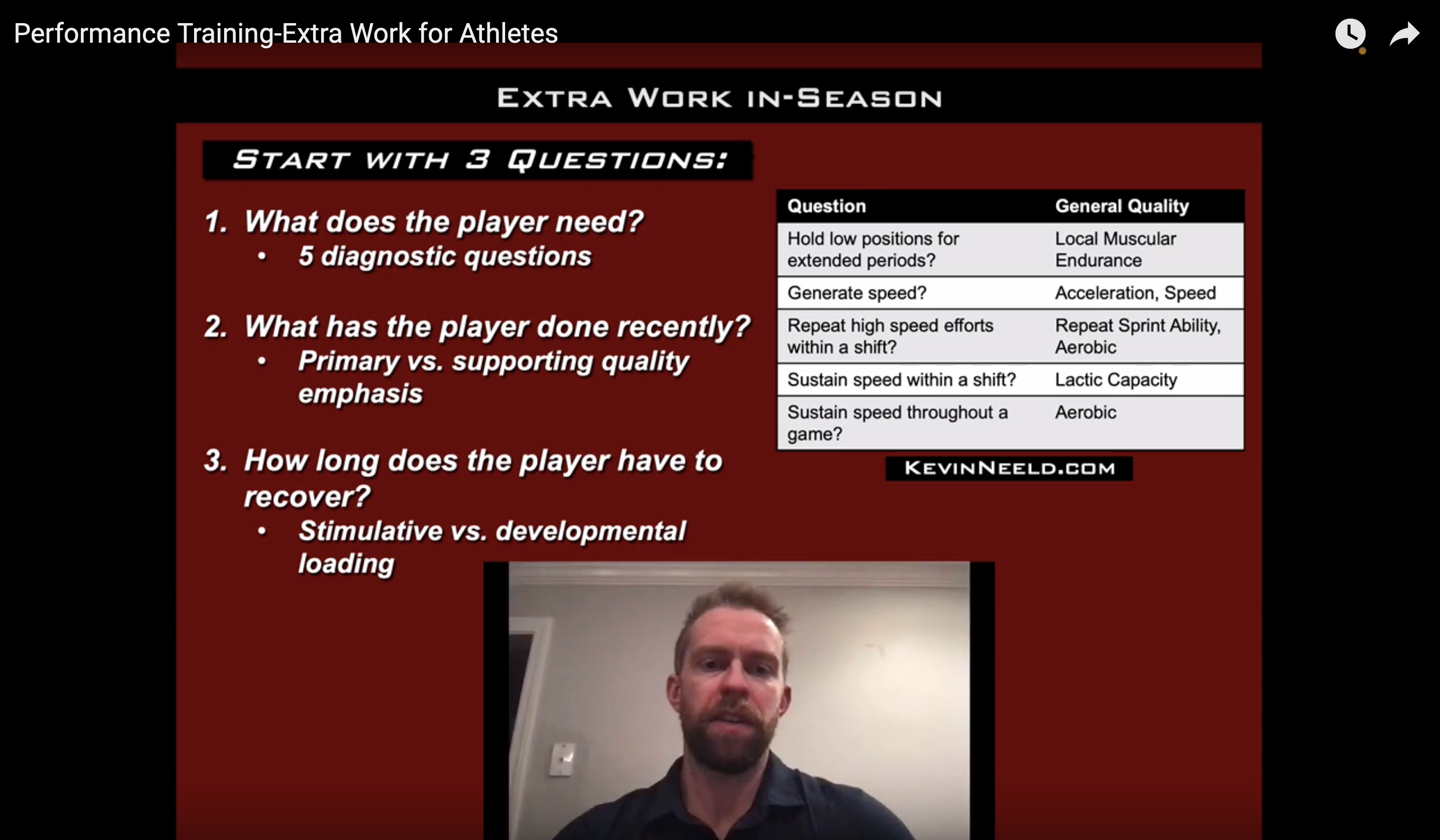

Behind the B Feature
Quick segment providing a look at some of the elements of the Boston Bruins performance training program. Full episode available here: Behind the B Appreciate the Behind the B team (@penzy24_7) highlighting the work that goes on behind the scenes! Feel free to post any other comments/questions you have below. If you found this helpful, […]
POSTED BY KEVIN NEELD Jan 25, 2022
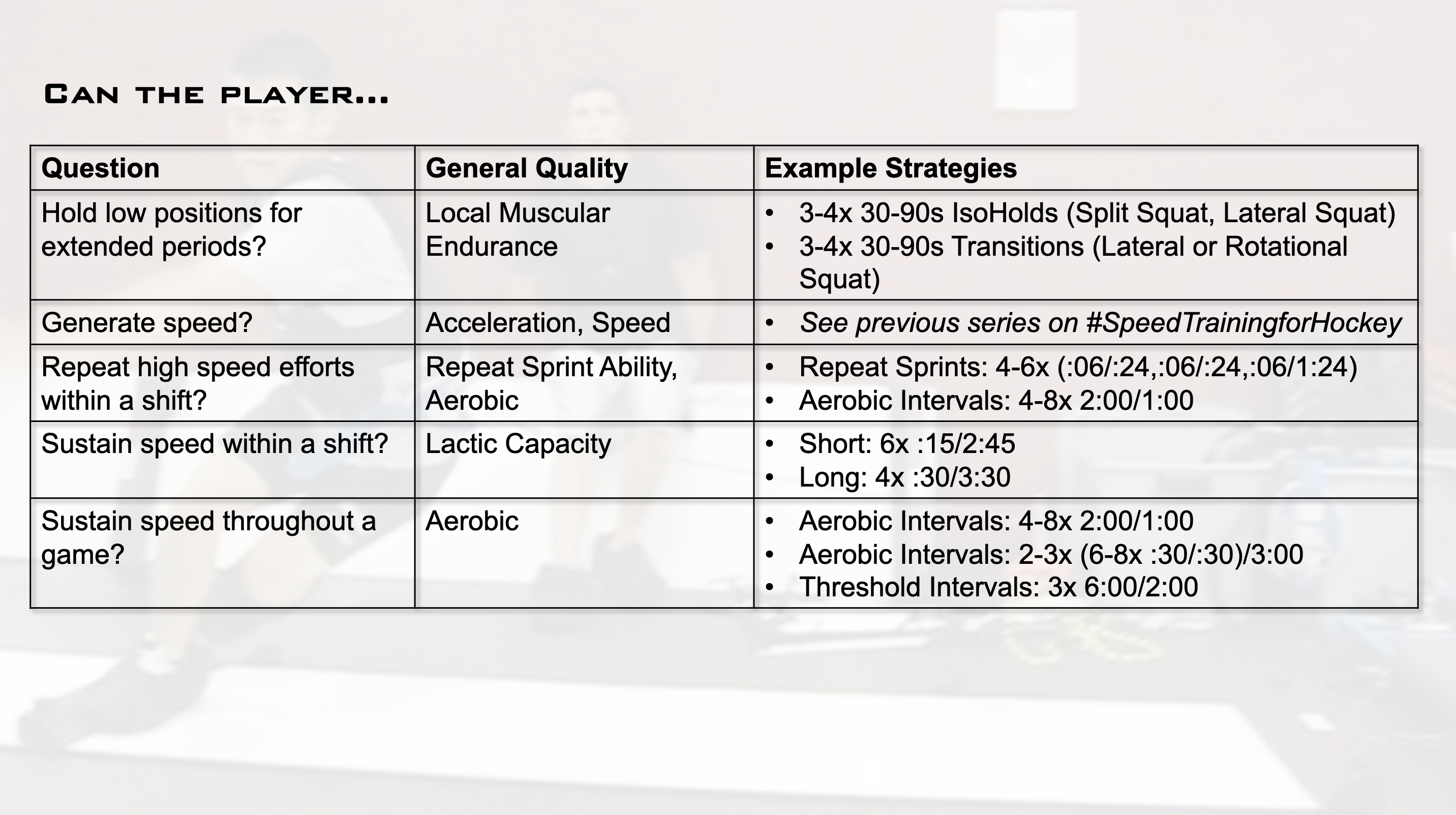
Hockey Conditioning: Where to start
Different players will have different limiting factors to their conditioning. Answering these questions may help the player hone in on more specific strategies for their individual needs: Can the player hold low positions for extended periods of time? (see previous post for target times) Can the player generate speed? (see previous series for information on […]
POSTED BY KEVIN NEELD Jan 24, 2022
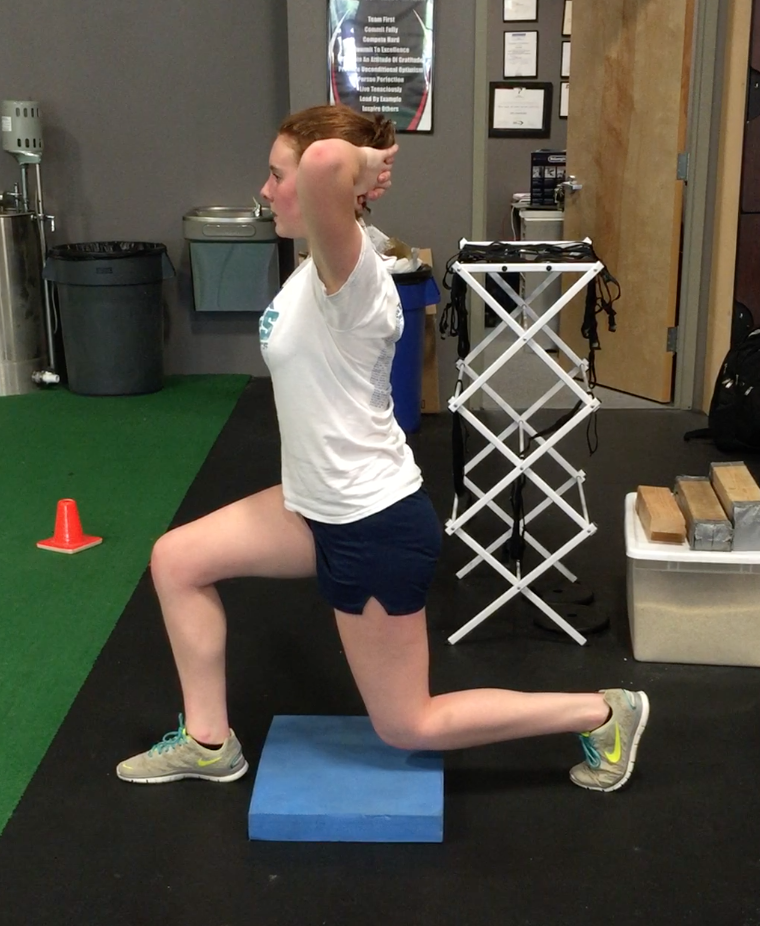
The Foundation for Hockey Conditioning: Split Squat Holds
Over the last couple of weeks, I’ve shared some research underlying why I believe hockey should be viewed as a “repeat sprint” sport. One thing I didn’t mention…repeat sprint ability should be built on a foundation of low position endurance. Maintaining low positions provides an opportunity for players to develop maximal power through each stride, […]
POSTED BY KEVIN NEELD Jan 18, 2022

Training to Improve Repeat Sprint Ability
There are two main strategies for improving repeat sprint ability: Improve initial sprint performance Improve recovery between sprints If you’re interested in training strategies to improve speed, check out the previous series I did on Speed Training for Hockey (also available at my instagram account: @KevinNeeld) Clearly, training to improve speed requires maximum effort, high-intensity […]
POSTED BY KEVIN NEELD Jan 17, 2022

Limiting Factors to Repeat Sprint Ability
One of the most common questions I get is “what’s the best way to condition for hockey?” Often times, people are looking for one prescription (e.g. “Do 12 sets of 15s of work with 45s of rest”). This review paper from Girard et al. (2010) details the factors that contribute to fatigue in repeat sprint efforts […]
POSTED BY KEVIN NEELD Jan 13, 2022
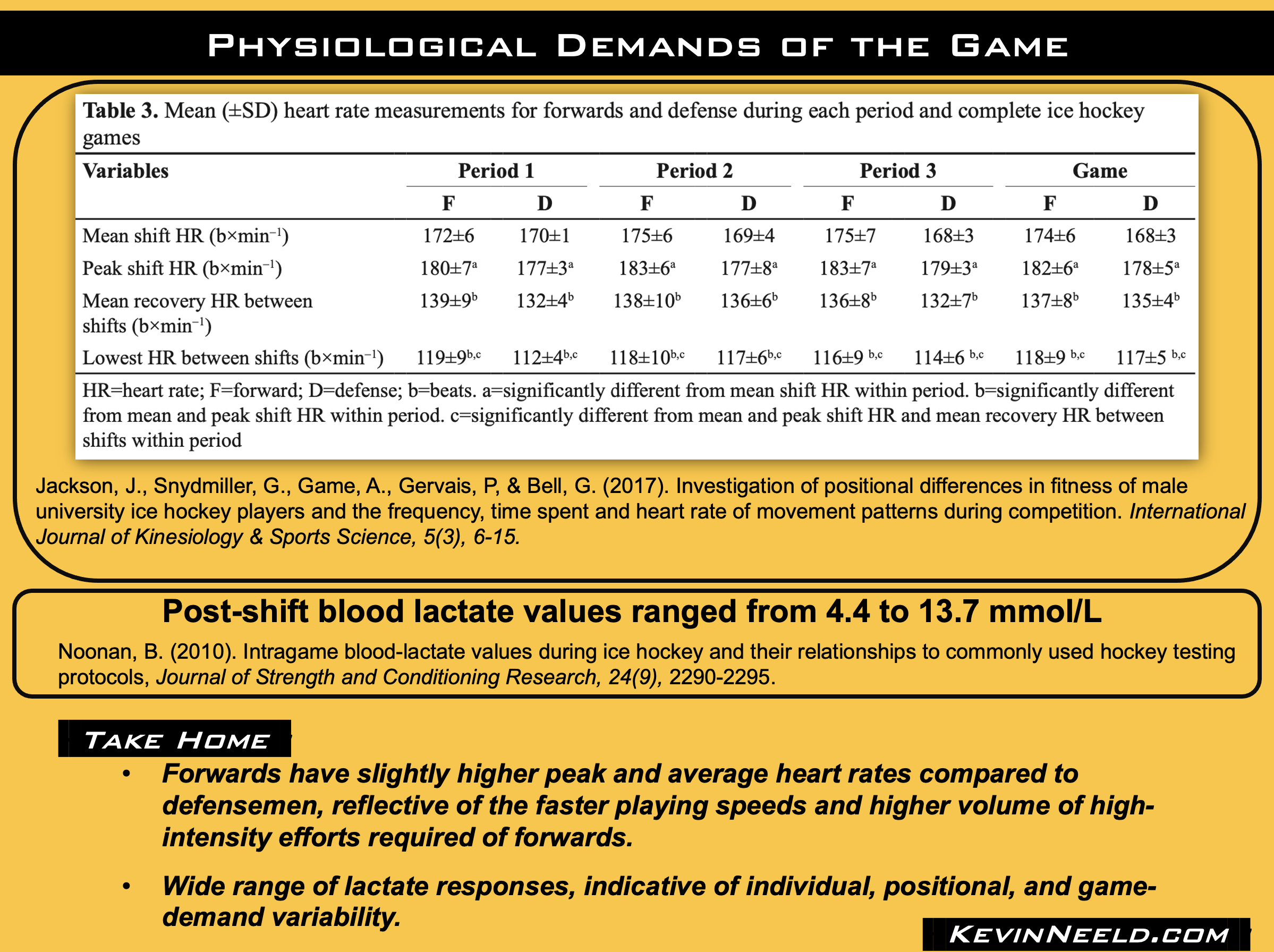
Physiological Demands of Ice Hockey
There are many ways to analyze the physiological demands of a sport, but tracking heart rate (HR) is the most commonly used. When looking at the HR response during shifts of male Canadian university players, forwards had higher peak and average HRs compared to defensemen. This is consistent with my experience, and speaks to the […]
POSTED BY KEVIN NEELD Jan 12, 2022
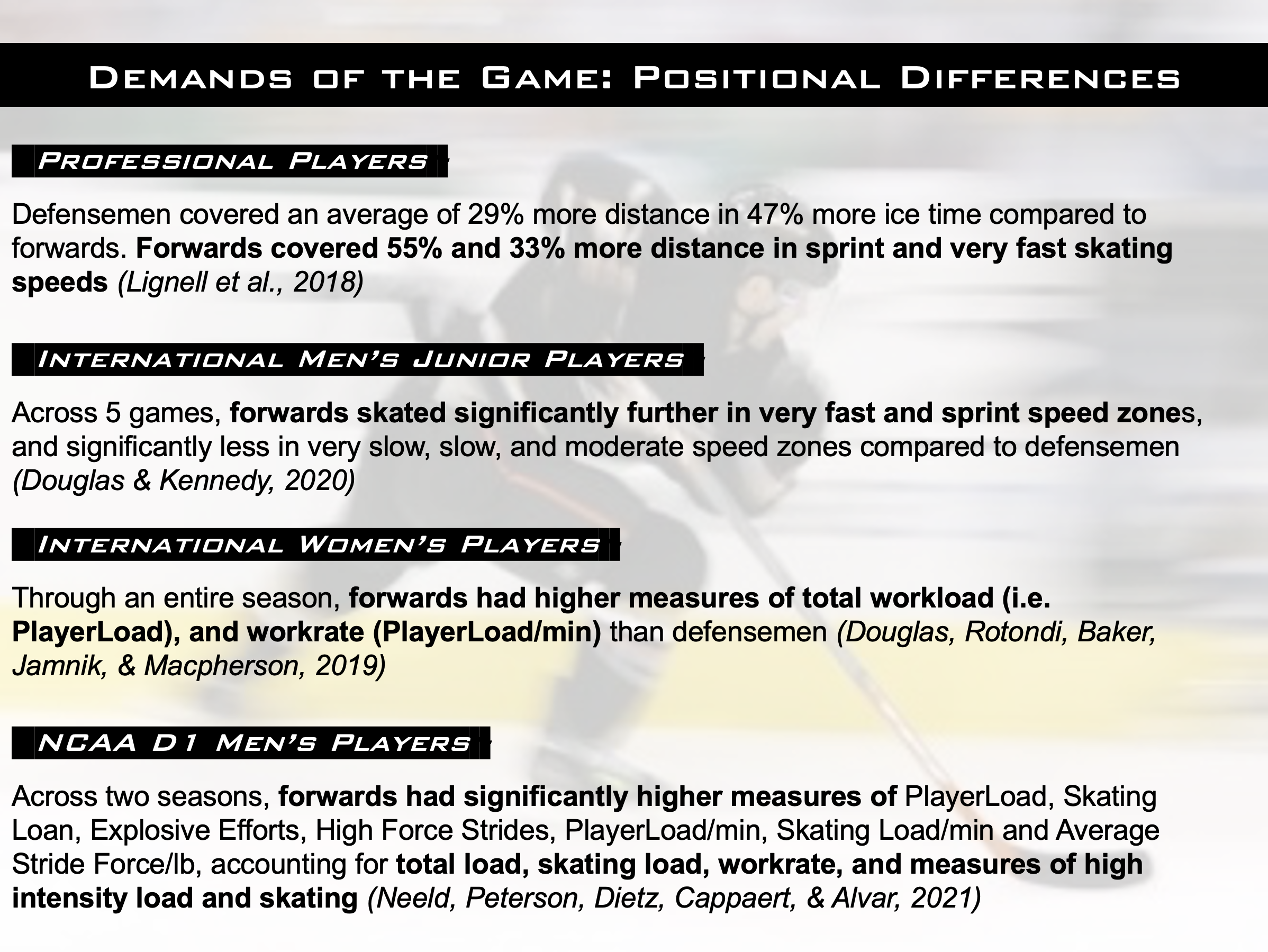
Analyzing Game Demands of Ice Hockey: Positional Differences
Four separate studies looking at different levels of competition across different time periods share common findings. Defensemen log more minutes, but their shifts are characterized by significantly less high intensity work and sprinting compared to forwards. The natural question that arises here is “should defensemen spend more time doing longer aerobic work?” Short answer – […]
POSTED BY KEVIN NEELD Jan 11, 2022

Analyzing Game Demands of Ice Hockey: Sprinting Emphasis
In a professional hockey game, players perform around 7 high intensity skating efforts per shift, including 1-2 sprints around 20-30m, accumulating over 2000m in high intensity skating throughout a game. These sprinting efforts often have an impact on possession, scoring opportunities, and ultimately the outcome of the game. Ice hockey is a repeat sprint sport, and as […]
POSTED BY KEVIN NEELD Jan 10, 2022
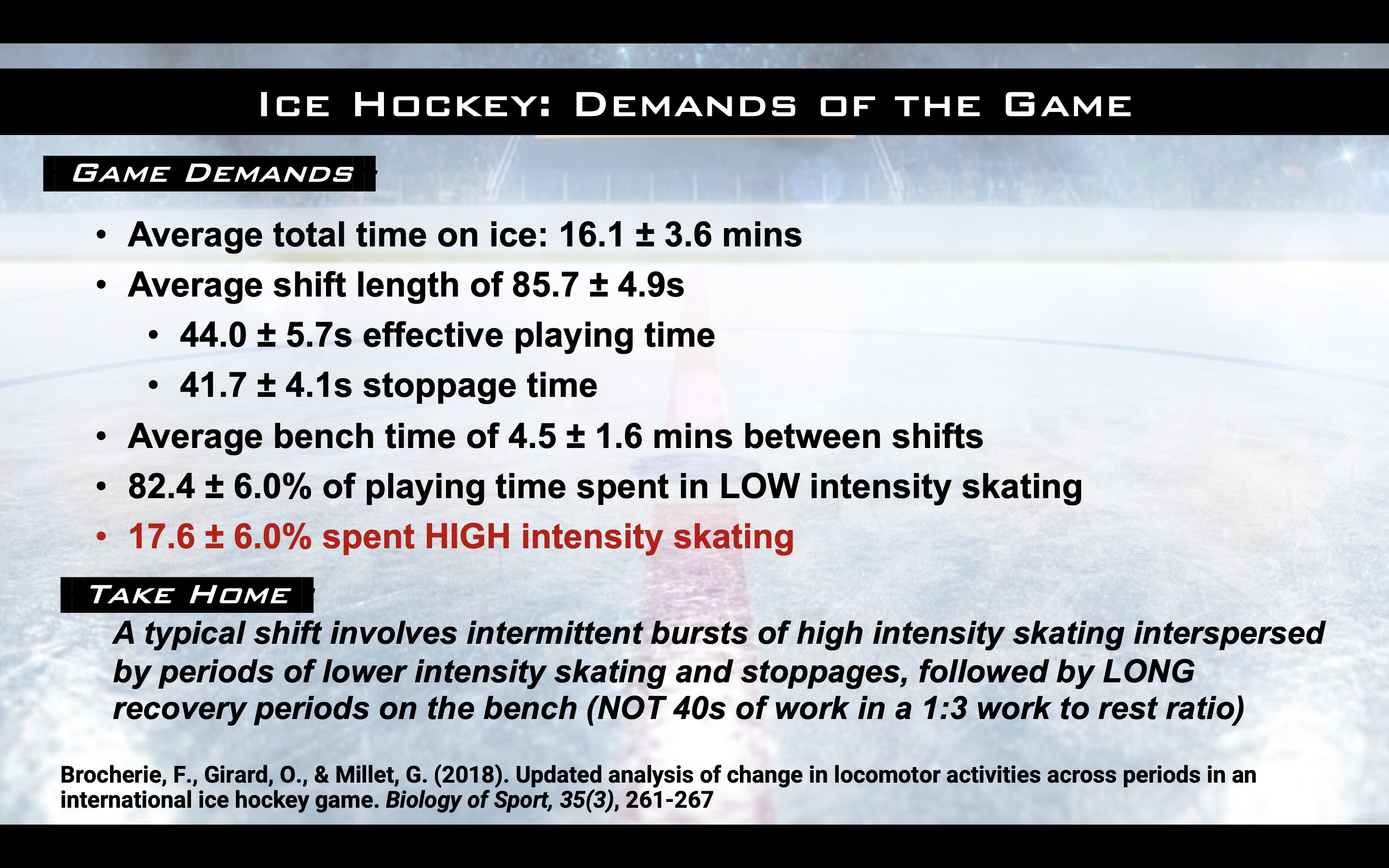
Analyzing Game Demands of Ice Hockey
In an international hockey game, the average shift length was ~86s, which was split in half between playing and stoppage time. Players spent ~18% of their playing time in high intensity skating. The big take home here is that the ice hockey requires bursts of high intensity skating interspersed by periods of lower intensity skating […]
POSTED BY KEVIN NEELD Jan 7, 2022


 Use CODE: "Neeld15" to save 15%
Use CODE: "Neeld15" to save 15%